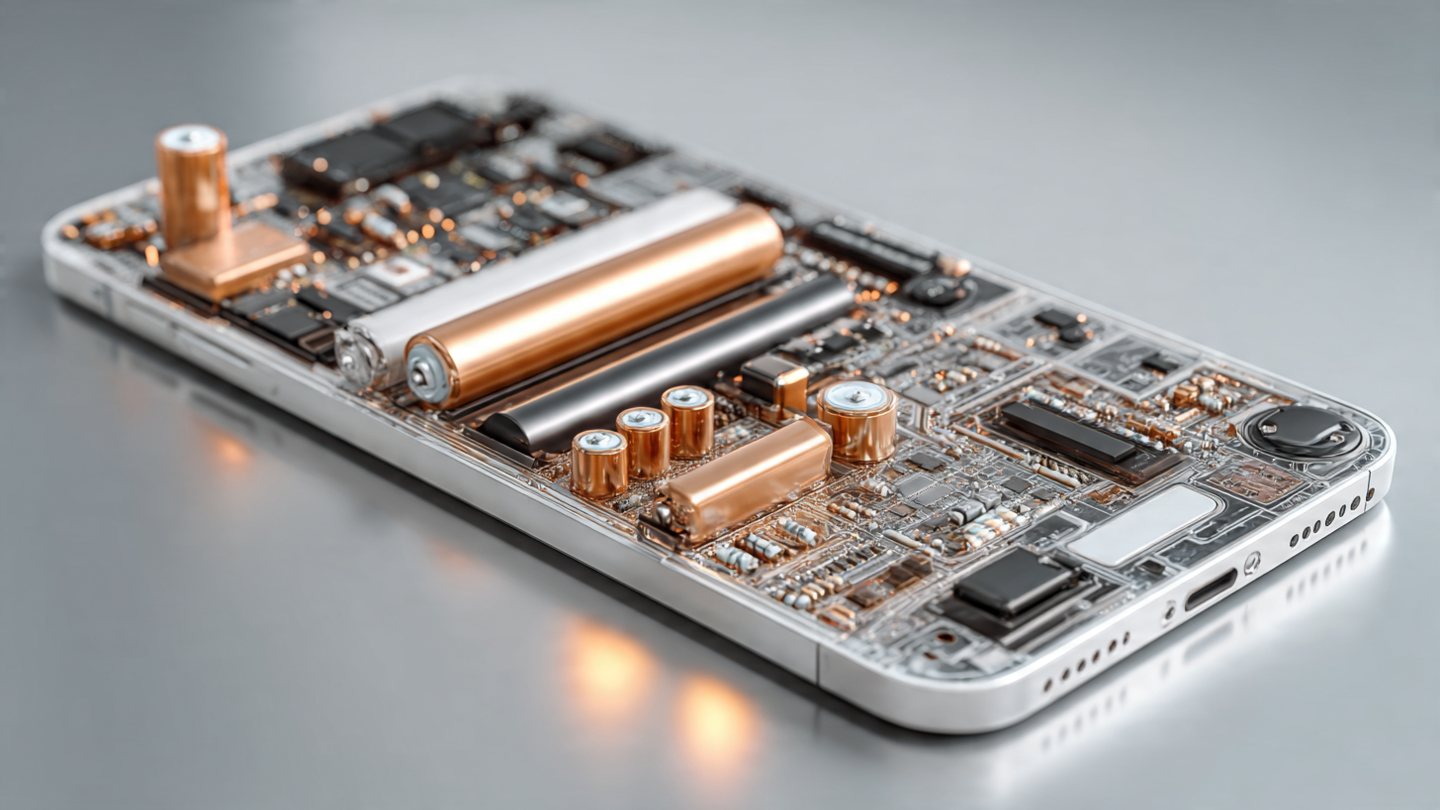For years, smartphone innovation has sprinted ahead — displays sharpened, processors accelerated, cameras evolved. Yet one crucial component has stubbornly lagged behind: the battery.
Lithium-ion technology, first commercialized in the early ’90s, still dominates. But as devices get thinner, faster, and more energy-hungry, the limits of lithium are showing. Engineers and scientists are already crafting the next generation of mobile energy storage — safer, denser, faster-charging, and more sustainable.
This article explores what comes after lithium-ion: from solid-state breakthroughs to graphene and sodium-based alternatives. We’ll look at where the industry is heading, who’s leading the charge, and how these innovations could transform the way smartphones are designed and used.
On this page: | The limits of lithium-ion | Solid-state batteries | Graphene and nanomaterials | Sodium-ion and beyond | Fast charging and efficiency trends | Sustainability and circular design | Final thoughts
The Limits of Lithium-Ion
Lithium-ion (Li-ion) has been the workhorse of the smartphone era. It’s lightweight, rechargeable, and powerful — but not limitless.
Its major constraints include:
- Energy density ceiling: Approaching its theoretical maximum (~300 Wh/kg).
- Thermal instability: Risk of overheating or combustion under stress.
- Degradation over time: Reduced capacity after repeated charging cycles.
- Environmental cost: Mining lithium, cobalt, and nickel is resource-intensive.
As a result, manufacturers are turning to alternative chemistries and new architectures to meet the next decade’s energy demands.
The post-lithium era isn’t about small gains — it’s about a fundamental redesign of what “battery” means.
Solid-State Batteries
If there’s one buzzword defining the battery future, it’s solid-state.
Unlike Li-ion cells that use a flammable liquid electrolyte, solid-state batteries (SSBs) employ solid electrolytes — ceramic, polymer, or glass-based — to transfer ions.
Why it matters
- Higher energy density: Up to 2x that of Li-ion.
- Safer chemistry: No leakage, no fire risk.
- Longer lifespan: Reduced degradation over cycles.
Challenges
- Cost: Current prototypes are expensive to produce.
- Temperature sensitivity: Some solid electrolytes struggle in cold environments.
- Scalability: Mass production remains elusive.
Who’s leading the race
- Toyota and QuantumScape are making strides in solid-state EV batteries.
- Samsung Advanced Institute of Technology (SAIT) has showcased a solid-state prototype with a 50% capacity boost over today’s lithium-ion packs.
If these breakthroughs scale, solid-state smartphones could arrive by 2028–2030, offering multi-day battery life and safer operation.
Graphene and Nanomaterials
Graphene — the atom-thin form of carbon — continues to excite materials scientists. Often dubbed the “miracle material,” graphene can make batteries faster, cooler, and more compact.
What graphene brings
- Ultra-fast charging: Full charge in under 15 minutes.
- Higher conductivity: Less heat generation.
- Thinner design potential: Perfect for ultra-slim phones.
Samsung and Huawei have both filed patents around graphene-enhanced Li-ion batteries, suggesting hybrid approaches rather than total replacements — a graphene overlay, not a full chemistry swap.
Meanwhile, researchers are combining graphene with silicon anodes to increase energy density without compromising cycle life.
| Feature | Lithium-Ion | Graphene-Enhanced | Solid-State |
|---|---|---|---|
| Energy Density | ★★★ | ★★★★ | ★★★★★ |
| Charging Speed | ★★★ | ★★★★★ | ★★★★ |
| Safety | ★★ | ★★★★ | ★★★★★ |
| Commercial Availability | Widely available | Early adoption | In development |
Graphene isn’t a magic bullet — but it’s a powerful bridge toward the post-lithium era.
Sodium-Ion and Beyond
As the world pushes toward sustainability, sodium-ion batteries are gaining traction. Sodium, unlike lithium, is abundant and inexpensive — found in ordinary salt.
Pros:
- Cheaper raw materials (no lithium, cobalt, or nickel).
- Better cold-weather performance.
- Lower environmental impact.
Cons:
- Lower energy density than lithium-ion.
- Bulkier cells, limiting use in slim smartphones.
Still, Chinese manufacturers like CATL and BYD are rapidly developing second-generation sodium-ion cells that rival lower-end Li-ion packs.
If perfected, sodium-ion could power budget and mid-tier smartphones by 2027, while premium devices adopt hybrid solutions like Li-S (lithium-sulfur) or solid-state systems.
Fast Charging and Efficiency Trends
While battery chemistry evolves, so does power management. Smartphone brands are racing to cut charge times from hours to minutes.
Recent developments:
- Silicon anodes in Li-ion batteries improve charge speed.
- GaN (Gallium Nitride) chargers enable higher power throughput safely.
- AI-assisted power management in chipsets optimizes consumption dynamically.
Today, we’re seeing 200W+ charging from brands like Xiaomi and Infinix — hitting 100% in under 10 minutes. But the next focus is sustainability and battery health, not just speed.
Expect adaptive charging that prioritizes long-term health over short-term gains, extending battery lifespans through intelligent control systems.
Sustainability and Circular Design
The next evolution in smartphone batteries isn’t just technological — it’s ethical.
Key sustainability priorities:
- Cobalt-free chemistries, reducing dependence on conflict minerals.
- Recyclable components, especially cathodes and casings.
- Battery-as-a-service ecosystems, where spent batteries are repurposed or refurbished.
Manufacturers are beginning to view batteries as modular assets rather than disposable parts. In the near future, your old phone battery could find new life in IoT devices or energy storage modules.
The green future of batteries depends as much on supply chain redesign as it does on electrochemical innovation.
Final Thoughts
The lithium-ion age has served us well, but the next frontier is already visible. Solid-state promises endurance and safety, graphene enhances performance, and sodium-ion democratizes sustainability.
In the coming decade, smartphone batteries will become smarter, safer, and more circular — not just better.
The battery of the future won’t just power your phone; it will power a new relationship between technology, energy, and responsibility.

